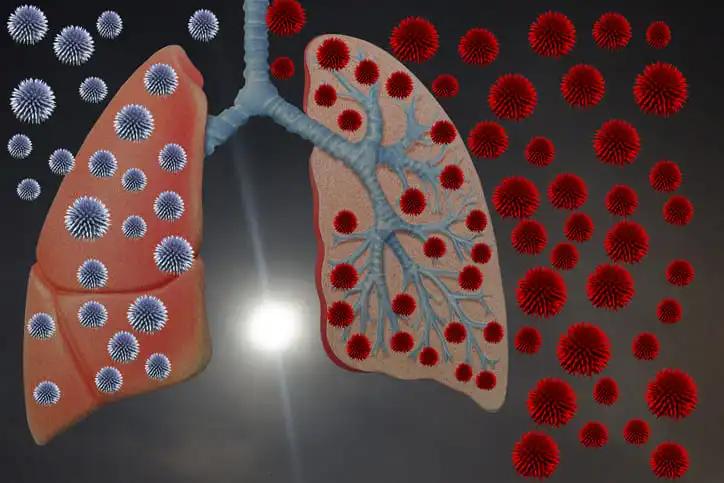KEY TAKEAWAYS
- The IELSG37 study examined the use of PET radiomics to predict PMBCL treatment outcomes.
- The trial utilized a machine-learning approach based on the recursive-partitioning CTree method.
- A radiomic prognostic model utilizing TLG and MH outperformed standard clinical scores in accurately identifying high-risk patients.
In an IELSG37 study, researchers investigated PET radiomics as a potential tool for predicting treatment outcomes in primary mediastinal B-cell lymphoma (PMBCL) patients. PET/CT scans were analyzed from 501 PMBCL patients who underwent rituximab and doxorubicin-based immunochemotherapy regimens, with 342 patients receiving consolidation radiotherapy.
A segmentation algorithm with a 25%-SUVmax threshold calculated functional PET parameters specifying tumor burden (metabolic tumor volume, MTV), glucose consumption (total lesion glycolysis, TLG), and heterogeneity (area under the curve of cumulative SUV-volume histogram, AUC-CSH) for each patient. Additionally,107 radiomics features (RF) were also extracted from baseline scans of 495 patients utilizing the PyRadiomics package. Using a machine-learning approach based on the recursive-partitioning classification tree (CTree) method, 74 RFs uncorrelated with SUVmax and MTV were selected for further exploration. Either Stata-17 or R software packages were used for conducting the statistical analysis.
The CTree analysis confirmed the Grey-Level-Run-Length-Matrix run variance (GLRLMrv) had a significant prognostic impact as a marker of metabolic heterogeneity (MH). Patients with low MH (GLRLMrv <0.137) showed a 93% progression-free survival (PFS) rate at 5 years, whereas those with high MH retained a 65% PFS rate (log-rank test, p < 0.0001). Regarding overall survival (OS) rates, the percentage was 96% for patients with low MH and 80% for those with high MH.
A subsequent CTree analysis including GLRLMrv, other dichotomized clinical variables, and PET metrics showed a notable link to PFS (p < 0.05) at univariable analysis (TLG, MTV, SUVmax, SUVpeak, maximal lesion diameter stage, sex, LDH, and number of extra-nodal localizations). A new prognostic model was developed using GLRLMrv and TLG data, differentiating patients with varying PFS and OS (p < 0.0001 for both). Based on the concordance probability estimate, the radiomic model exhibits higher predictive accuracy (highest Harrell’s C value) than the international prognostic indices such as IPI, revised IPI, and age-adjusted IPI. This is further confirmed by its lowest Akaike’s information criterion, which indicates a better discriminatory power overall.
The study suggested that a radiomic prognostic model based on TLG and MH is more accurate in identifying high-risk PMBCL patients than standard clinical indices. This could improve treatment decisions and outcomes.
Source: https://onlinelibrary.wiley.com/doi/10.1002/hon.3163_54
Clinical Trial: https://classic.clinicaltrials.gov/ct2/show/NCT01599559
Ceriani, L., Milan, L., Cascione, L., Rocco, A. D., Kryachok, I., Davies, A. J., Stathis, A., Johnson, W. M., Ciccone, G., Martelli, M., & Zucca, E. BASELINE PET RADIOMICS OUTPERFORMS CLINICAL RISK SCORES IN PREDICTING PRIMARY MEDIASTINAL B-CELL LYMPHOMA OUTCOME: INSIGHTS FROM THE IELSG37 STUDY. Hematological Oncology, 41, 90-91. https://doi.org/10.1002/hon.3163_54



